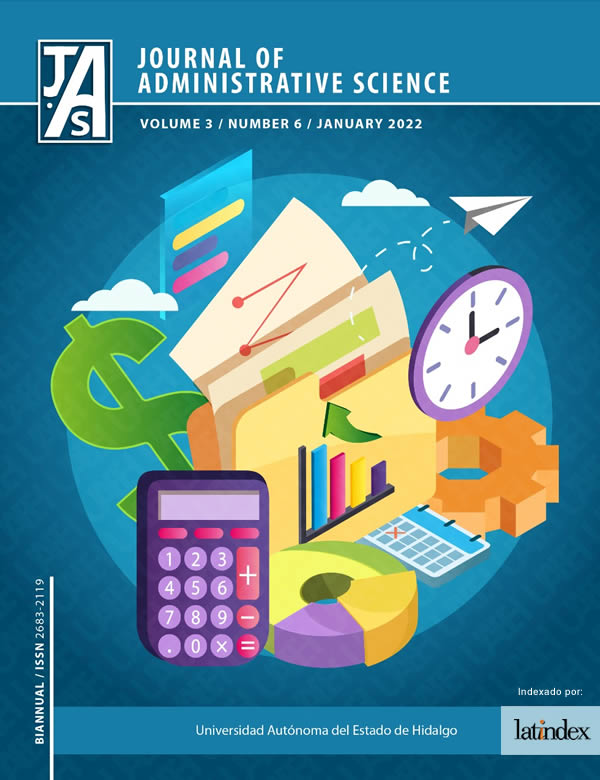Multiplier elements of innovation: towards an innovation model in the Mexican micro and small business
DOI:
https://doi.org/10.29057/jas.v3i6.7379Keywords:
Innovation, small businesses, technology management, marketing strategy, talent management.Abstract
Innovation is a fundamental strategy to generate and maintain a competitive position in the market, however, the companies’ ability to generate innovations is not an easy task, as there are different factors that influence it. Although several innovation models have been developed, no ad hoc models have been proposed to the conditions of micro and small enterprise, nor the structural conditions in developing countries. Therefore, the objective of this research is to identify and analyze the most relevant management factors that drive innovation in Mexican micro and small business. To this end, 594 micro and small businesses from the Laja-Bajío region belonging to the commercial sector, service and manufacture, were surveyed. Semi-structured interviews were conducted to identify their needs on innovation generation. The results show that technology management, marketing strategies and human resources management are the key elements to drive innovation in the MSEs (Micro and Small enterprises).
Downloads
Publication Facts
Reviewer profiles N/A
Author statements
Indexed in
- Academic society
- N/A
- Publisher
- Universidad Autónoma del Estado de Hidalgo
References
Ahuja, G. y Lampert, M.(2001). Entrepreneurship in the large corporation: A longitudinal study of how established firms create breakthrough inventions, Strategic Management Journal, 22, número especial, 521-543.
Barney, J. (1991). Firm Resource and Sustained Competitive Advantage, Journal of Management, 17(1), 99-120.
Diercikx, I. y Cool, K. (1989). Asset Stock Accumulation and Sustaintability of Competitive Advantage. Management Science, 35 (12), 1504-1511.
Fernandes, C., Ferreira, J. y Raposo, M. (2013). Drivers to firm innovation and their effects on performance: an international comparison. Springer Science+Business Media New York. 9. pp. 557–580.
Güven, A., Muzaffer, B., Cengiz, Y. y Pinar, B. (2012). How does innovativeness yield superior firm performance? The role of marketing effectiveness. Innovation: Management, Policy & Practice, 14 (1), 107-128.
Hitt, M., Ireland, R. y Hoskisson, R. (2008). Administración Estratégica. Competitividad y globalización. México: CENGAGE Learning.
Hung, K. y Chou, C. (2013). The impact of open innovation on firm performance: The moderating effect of internal R&D and environmental turbulence. Technovation, 33 (10-11), 360-380.
Kostopoulos, K., Papalexandris, A., Papachroni, M. y Loannou G. (2011). Absorptive capacity, innovation, and financial performance. Journal of Business Research, 64, 1335–1343.
Moghaddam, A., Imani, Y., Erteza, N. y Setayeshi, L. (2013). Mediating role of innovation & market- orientation in the relationship between knowledge management & financial performance: a case study of small & enterprereur business. Interdisciplinary journal of contemporary research in business, 5(3).
Pedroza, A. (2013). Inteligencia Competitiva. En Pedroza, A., Garrido, L., López, C., Ortiz, V. Y Ortiz, J. (2013). Innovación y tecnología en la empresa. México: Ed. ITESO y ACACIA.
Prorokowski, L. (2014). Is investing in innovation an effective strategy in times of crisis? Some evidence from Poland, Innovation, 16 (1), 32- 52.
Rubera, G. y Kirca, A (2012) Firm Innovativeness and Its Performance Outcomes: A Meta-Analytic Review and Theoretical Integration. Journal of Marketing, 76 (3), 130-147.
Waleed, O. (2015). Innovative behavior and venture performance of SMEs. European Journal of Innovation Management, 18 (2), 195 – 217.

















